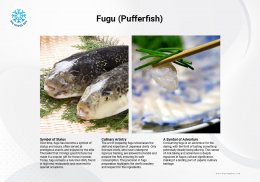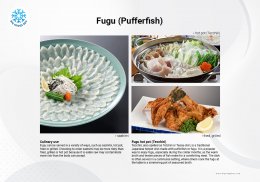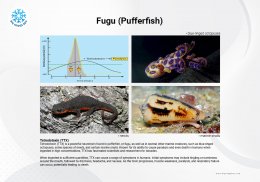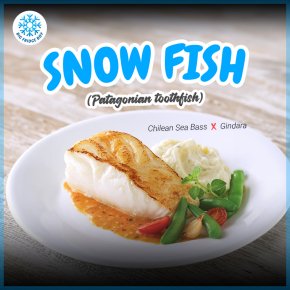'Fugu' Pufferfish How Dangerous Is It?
Last updated: 2 May 2023 | 3022 Views |
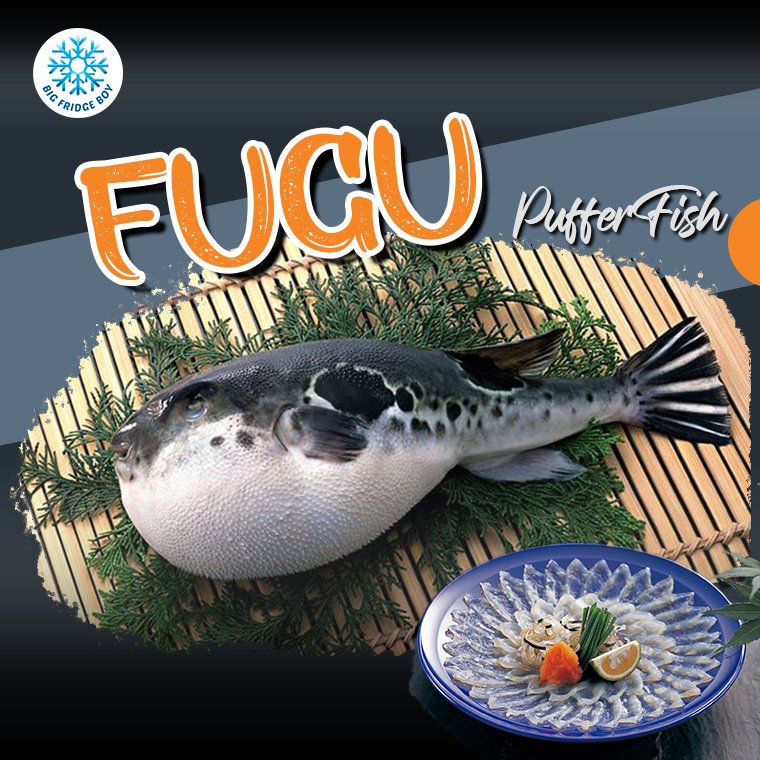
Pufferfish, or fugu (フグ) in Japanese, holds a unique position in the world of gastronomy. While many know it for its potentially lethal nature, the cultural significance of this unique creature in Japan goes far beyond its dangerous reputation. From ancient times to the present day, pufferfish has been a symbol of status, culinary mastery, and adventure.

Historical Roots
The history of fugu consumption in Japan dates back to the Jomon period (14,000 – 300 BCE), with archaeological evidence suggesting that people were already consuming pufferfish during that time. However, it wasn't until the Edo period (1603 – 1868) that fugu began to garner widespread attention. During this era, samurai warriors were known to indulge in fugu as a test of courage, while commoners were often prohibited from consuming the fish due to its potential lethality.
Symbol of Status
Over time, fugu became a symbol of status and luxury. The fish was often served at important banquets and gatherings, and its high price tag made it a delicacy reserved for the elite. It was believed that consuming fugu could bring good fortune, and it was often presented as a gift to those in power. In modern times, fugu is still considered a luxurious dish, often served at high-end restaurants and special occasions.
Culinary Artistry
The art of preparing fugu is a testament to the skill and expertise of Japanese chefs. Only licensed fugu chefs are allowed to handle and prepare the fish, as they undergo rigorous training to safely remove the toxic parts of the fish without contaminating the edible flesh. The precision and care with which fugu is prepared elevates it to an art form, with each dish showcasing the chef's mastery and respect for the ingredients.
A Symbol of Adventure
Consuming fugu is often seen as an adventure for the daring and the curious. The thrill of tasting something potentially deadly is undeniably alluring, and many people seek out the experience as a test of their own courage. This sense of adventure and risk-taking is deeply ingrained in the cultural significance of fugu, making it an enduring part of Japan's culinary heritage.
In conclusion, the cultural significance of pufferfish in Japan is multifaceted, encompassing its historical roots, status as a luxury item, and the artistry involved in its preparation. Despite its dangerous reputation, fugu continues to captivate the hearts and taste buds of those who dare to experience this fascinating delicacy.

Why consuming pufferfish can cause death
Tetrodotoxin (TTX) is a powerful neurotoxin found in pufferfish, or fugu, as well as in several other marine creatures, such as blue-ringed octopuses, some species of newts, and certain marine snails. Known for its ability to cause paralysis and even death in humans when ingested in high concentrations, TTX has fascinated scientists and researchers for decades.
Chemical Properties
Tetrodotoxin is a water-soluble, heat-stable, and non-proteinaceous compound. Its molecular structure consists of a guanidinium group connected to a highly oxygenated carbon skeleton. TTX is classified as a "guanidinium toxin" due to the presence of the guanidinium group, which plays a crucial role in its toxic effects.
Mechanism of Action
The primary target of TTX is the voltage-gated sodium channels (NaV) in the membranes of nerve cells. These channels are responsible for generating and propagating electrical signals, or action potentials, that allow neurons to communicate with one another. TTX binds to the extracellular pore of the sodium channels, blocking the flow of sodium ions into the cell. This inhibition prevents the generation of action potentials, ultimately leading to paralysis of the affected muscles.
Symptoms of Tetrodotoxin Poisoning
When ingested in sufficient quantities, TTX can cause a range of symptoms in humans. Initial symptoms may include tingling or numbness around the mouth, followed by dizziness, headache, and nausea. As the toxin progresses, muscle weakness, paralysis, and respiratory failure can occur, potentially leading to death. The severity of symptoms and the likelihood of survival largely depend on the dose of TTX consumed and the speed with which medical treatment is administered.

Eating Pufferfish (Fugu) Safely
Pufferfish, or fugu, is renowned for its potential lethality due to the presence of the potent neurotoxin tetrodotoxin. However, when prepared correctly by a skilled and licensed chef, fugu can be a safe and enjoyable delicacy. Here are some tips on how to safely savor this unique culinary experience.
- Choose a reputable restaurant
To ensure your safety, always choose a reputable restaurant that specializes in fugu cuisine. These establishments will employ licensed fugu chefs who have undergone extensive training and passed rigorous examinations to demonstrate their ability to safely prepare the fish. - Check the chef's credentials
In Japan, fugu chefs are required to obtain a license to handle and prepare pufferfish. If you are unsure about the chef's qualifications, don't hesitate to ask the restaurant to confirm that their fugu chef holds a valid license. - Be cautious with DIY fugu
It's strongly advised against attempting to prepare fugu at home, as the risk of accidental poisoning is much higher without the proper training and experience. Leave fugu preparation to the professionals, and avoid consuming any homemade fugu dishes. - Always start with the least risky dish
Fugu can be served in a variety of ways, such as sashimi, hot pot, fried or grilled. Choosing to order sashimi may be more risky than fried, grilled or hot pot because it is eaten raw may contaminate more risk than the body can accept. - Avoid consuming the liver and other toxic parts
While the liver of the pufferfish is considered a delicacy by some, it is also the most toxic part of the fish and is illegal to serve in Japan. Stick to the non-toxic parts of the fish, such as the muscle tissue, to minimize the risk of poisoning. - Limit alcohol consumption
Consuming excessive amounts of alcohol while eating fugu can potentially mask the initial symptoms of tetrodotoxin poisoning, making it difficult to detect and treat in a timely manner. Enjoy your fugu meal responsibly and be mindful of your alcohol intake. - Pay attention to any unusual symptoms
If you experience any signs of tetrodotoxin poisoning after consuming fugu, such as tingling or numbness around the mouth, dizziness, or difficulty breathing, seek immediate medical attention.
In conclusion, the key to safely enjoying pufferfish (fugu) lies in choosing a reputable restaurant with a licensed chef, avoiding risky cuts and toxic parts of the fish, and being mindful of your alcohol consumption. By following these guidelines and staying vigilant, you can savor the unique taste and texture of fugu while minimizing the risk of tetrodotoxin poisoning.

